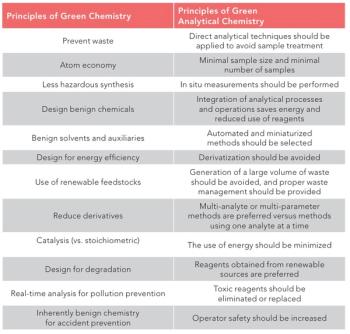
- LCGC North America-05-01-2014
- Volume 32
- Issue 5
Triple-Quadrupole Mass Spectrometers for GC–MS
The power of MS-MS analysis applied to GC analysis, including the instrumentation, experiment types, and application areas
Gas chromatography–mass spectrometry (GC–MS) techniques are a fundamental part of the analytical armory in many laboratories and can provide both qualitative and quantitative information on gas-phase analytes across all industrial applications. First introduced in the 1950s, these instruments typically use electron ionization (EI) or chemical ionization (CI) techniques to produce charged gas-phase species that are subsequently analyzed according to their mass-to-charge ratio (m/z) by a host of analyzer types, including quadrupole, ion-trap, time-of-flight (TOF), magnetic sector, and Fourier transform MS instruments, depending on the resolution and mass accuracy required by the application. Electron ionization is the most popular technique and is a higher energy technique capable of producing fragmentation of the analyte species to aid with structural elucidation or provide confirmatory ions for quantitative analysis. Chemical ionization is a much softer ionization technique and is typically used to improve the yield of the pseudomolecular ion or increase sensitivity, especially with halogenated compounds.
For many years, MS-MS or MSn spectral experiments have been possible with GC applications, via ion-trap (so-called tandem in time) instruments. These instruments can yield very highly selective data for structural elucidation; however, they provide low mass accuracy and low resolution, and the instrumentation often suffers from issues with linearity of response. Modern tandem mass spectrometry applications demand high sensitivity, high mass accuracy, and high resolution, and as such, most modern GC–MS-MS applications typically use "tandem in space" methods using analyzer combinations shown in Table I and have only relatively recently realized widespread commercial availability. The most commercially popular instruments are the triple-quadrupole (QqQ) and quadrupole–time-of-flight (QTOF) combinations, both of which use a multipole collision cell between each analyzer that fragments the ions from the first mass analyzing device before further mass analysis in the second. One notable exception is the orbitral trap Fourier transform mass analyzer, which is a new generation, orbital ion trap system that can achieve very high resolution.
Table I: Performance figures of various GCâMS-MS systems
Tandem GC–MS has its own challenges, not least of which is the very highly efficient nature of the technique that gives rise to peaks which elute in a relatively short time frame. High MS scan rates are required to derive enough measurements within the elution time of each analyte to render the data meaningful, and this is a primary consideration when choosing the analyzer combination and setting experimental parameters.
Quantitatively, tandem mass spectrometry is typically used to achieve deconvolution of highly complex samples in analyses in which one needs to determine analyte concentration at trace levels, which is achieved through the specificity derived by tuning the various mass analyzing devices to specific precursor and product ions in each of the analyzing devices. Figure 1 gives a schematic overview of the various experiment types that are possible in GC–MS-MS.
Figure 1: Various MS-MS modes possible with GCâMS-MS.
The inclusion of a high mass accuracy device within the analyzer combination gives the advantage that empirical formulas can be postulated from the measured mass. The more accurate the device, the fewer empirical formulae that could give rise to the measured mass, which is a significant advantage in structural elucidation. The high mass accuracy of QTOF and orbitral trap instruments make them popular choices for structural elucidation work.
Articles in this issue
over 11 years ago
New Chromatography Columns and Accessories at Pittcon 2014, Part IIover 11 years ago
Joseph Jack Kirkland: HPLC Particle Pioneerover 11 years ago
New Gas Chromatography Products 2014over 11 years ago
Readers' Questions: Calibrationover 11 years ago
Vol 32 No 5 LCGC North America May 2014 Regular Issue PDFNewsletter
Join the global community of analytical scientists who trust LCGC for insights on the latest techniques, trends, and expert solutions in chromatography.




